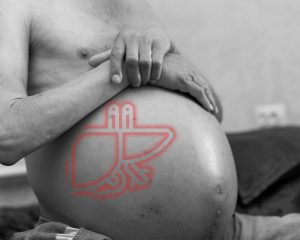You most likely have an idea of what a liver transplant is all about. Well, it’s been talked about often. Just a single google search would provide you with all the information needed about this procedure. If you’re quite familiar with this procedure, you would know that there are different types of donors. There is the living donor, and there is also the dead donor. Well, these two come with slight differences. There are pros and cons to using either of these donors. For today we will just be taking a look at the living donor liver transplant pros and cons. If you want to find out about this, you have to keep reading.
We all know that doing surgery isn’t as easy as it seems. And there is a lot involved when it comes to doing surgery. Well, doctors understand this, and that is why they are very particular about any surgical procedure. There is what you call the success rate of a liver transplant. And this is dependent on so many factors. Well, one of the many factors happens to be whether it’s a living donor or a dead donor. Does this even make any sense at all? Well, it would when we explain further as we go on.
Living Donor Liver Transplant
So what exactly is a living donor liver transplant? It is a procedure that involves removing a portion of the liver of a donor that’s alive. This portion is transplanted into the recipient. Take note that the liver must be healthy before it can be given to the recipient.
Most times, a living donor happens to be a family member or someone close to the recipient. But there are also times that strangers would agree to donate their liver to the recipient.
One reason why this procedure is very effective is that the liver can regenerate. Take note that a part of the liver is transplanted and not the whole liver. So after the transplant is done, the liver of both the donor and recipient would start to regenerate. And then after some weeks, it would become a whole liver again. That’s super cool if you think about it.
According to statistics, there are about 17,00 people that wait to have a liver transplant. And about 6700 can get a liver transplant done because of dead donors. Dead donors are donors that are brain dead. When it comes to a living donor, the timing for the operation can be well-planned. With this, a lot of complications can be avoided during and after the transplant.
Can anyone be a living donor? Not really. There are certain criteria that a person must pass to be a living donor. Let’s take a look at the criteria.
- The donor must be healthy generally
- The blood type of the donor must match that of the recipient
- The donor must have good motives for donating to the recipient
- The donor must be between the age of 20-60
Well, certain risks come with doing a liver transplant. And some of them are infection, bleeding, bile leakage, and even death of the patient. But then again, these are complications that can be avoided. So make sure you get your liver transplant done at a reputable hospital.
Pros
So as we already know everything comes with its risks and benefits. The same goes for having a liver transplant done. There are risks involved, but then again, there are greater benefits. Let’s take a look at the pros of using a living donor.
- Gift of life: One of the greatest benefits is that you can give life to the person. Well, people that have liver problems and need liver transplants are quite sick. As a donor to would be able to increase the life expectancy of the patient. At the same time, you would be able to make the patient happy knowing they wouldn’t die anytime soon.
- Liver regeneration: As mentioned before, the liver has a cool way of regenerating. And it happens to be the only internal organ that can do this. So if a part of your liver is removed you have nothing to worry about. It would grow back in no time. Even if the size of the liver is as small as 25% you can be sure that it would grow back. Usually, after 2-4 weeks it is expected that there would be the regeneration of the liver. After a year the liver should be in its full size.
- Low financial burden: If you’re under health insurance, then this is of great benefit to you. And the reason is that the insurance company would cover for the donation process. So if you don’t have to worry about the expenses. Some things that can’t be covered by insurance are the medication. But the medications are affordable so you have nothing to worry about.
Cons
- Time commitment and risk: Unlike using a dead donor this type is very time-consuming. And that’s because the procedure would be prepared thoroughly. And usually, you’re always being carried along. You would have to go for several checkups to make sure you are fit for donating. At the same time, it’s a risk for you as the donor. And that’s because liver transplant is a big operation. You have to deal with the fact that you would be opened up and then stitched back together. Even after donating, you would have to stay in the hospital to recover properly.
- Pain: Surgery would come with some level of pain and that you would be uncomfortable for some time. As you recover you might also feel fatigued. Usually, all the pain, discomfort, and fatigue would disappear completely after 3 months.
- Lifestyle changes: There are some life changes that you would have to make. Such as staying away from certain drugs and alcohol. Eating a good diet for your liver. You would also have to visit the hospital regularly. Also, you would have to use medications for a very long time. You would have to adjust to all these.
So that’s all we have for you with regards to living donor liver transplant.
Usually, all the pain, discomfort, and fatigue would disappear completely after 3 months.























